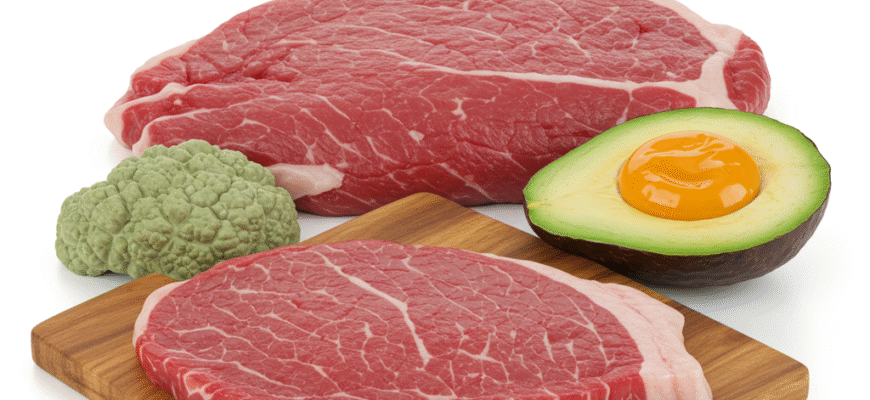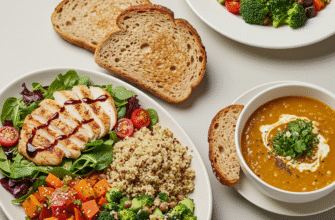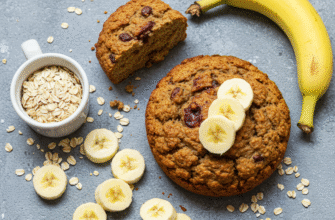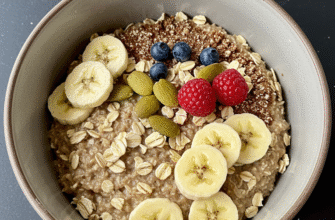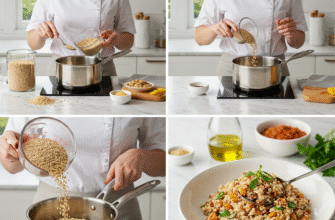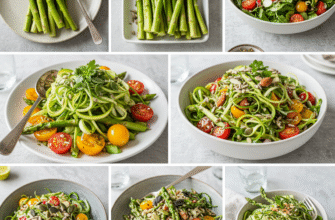- Legumes: The Humble Heroes
- Beans (Kidney, Black, Pinto, etc.)
- Lentils (Brown, Green, Red, Puy)
- Chickpeas (Garbanzo Beans)
- Peas (Green, Split)
- Soy Products: Versatility Defined
- Tofu
- Tempeh
- Edamame
- Nuts and Seeds: Tiny Titans of Nutrition
- Nuts (Almonds, Walnuts, Peanuts, Pistachios)
- Seeds (Chia, Flax, Hemp, Pumpkin, Sunflower)
- Whole Grains: More Than Just Carbs
- Quinoa
- Oats
- Buckwheat
- Dairy and Eggs: Non-Meat Animal Products
- Eggs
- Dairy (Milk, Yogurt, Cheese)
- Other Noteworthy Sources
- Nutritional Yeast
- Spirulina
- Incorporating More Plant Protein
Thinking about protein often brings images of steak, chicken, or fish to mind. And while these are certainly significant sources, the world of protein extends far beyond the butcher’s counter or the fish market. Exploring protein options beyond meat isn’t just for vegetarians or vegans anymore; many people are looking to diversify their diets, reduce meat consumption for environmental or health reasons, or simply discover new flavours and textures. Luckily, the options are abundant, delicious, and surprisingly versatile.
Getting enough protein is crucial for numerous bodily functions, including building and repairing tissues, making enzymes and hormones, and supporting immune function. The good news is that plants can provide ample protein, often packaged with beneficial fibre, vitamins, and minerals, components sometimes lacking in traditional meat-centric diets. Let’s dive into the fantastic array of non-meat protein powerhouses available.
Legumes: The Humble Heroes
Legumes are arguably the cornerstone of plant-based protein. This category includes beans, lentils, peas, and chickpeas, each offering a unique profile and culinary potential.
Beans (Kidney, Black, Pinto, etc.)
Beans are incredibly versatile and budget-friendly. Think beyond basic chili (though that’s great too!). Black beans are fantastic in tacos, burritos, salads, and even blended into veggie burgers. Kidney beans hold their shape well in stews and salads. Pinto beans are perfect for refried beans or hearty soups. They are packed not only with protein but also with significant amounts of fibre, which aids digestion and promotes a feeling of fullness. Preparing dried beans requires soaking, but canned beans offer a convenient shortcut.
Lentils (Brown, Green, Red, Puy)
Lentils are nutritional champions. Unlike most dried beans, they don’t require pre-soaking and cook relatively quickly. Brown and green lentils maintain their shape well, making them ideal for salads, pilafs, and side dishes. Red lentils break down more easily, lending a creamy texture to soups, stews, and dals (Indian lentil dishes). Puy lentils, often called French lentils, have a peppery flavour and firm texture, excellent in salads. Lentils provide a substantial protein punch alongside iron and folate.
Chickpeas (Garbanzo Beans)
Chickpeas have gained massive popularity, largely thanks to hummus, but their uses are far broader. Roasted chickpeas make a fantastic crunchy snack or salad topper. They are essential in falafel, add substance to curries and stews, and can even be mashed as a base for sandwich fillings. Like other legumes, they offer a great combination of protein and fibre. Don’t forget the liquid from canned chickpeas (aquafaba) – it’s a surprisingly effective vegan egg replacer in some baking recipes!
Peas (Green, Split)
Green peas, often considered just a simple side dish, contribute a decent amount of protein. They’re easy to add to pasta dishes, stir-fries, risottos, or pot pies. Split peas, typically used in split pea soup, are another legume family member offering protein and heartiness, cooking down into a thick, comforting consistency.
Soy Products: Versatility Defined
Soybeans are a complete protein source, meaning they contain all nine essential amino acids our bodies cannot produce. They come in various forms:
Tofu
Made from condensed soy milk pressed into solid white blocks, tofu is a chameleon in the kitchen. Its neutral flavour allows it to absorb marinades and seasonings beautifully. It comes in different textures: silken tofu is smooth and creamy, perfect for smoothies, sauces, dressings, and desserts; firm and extra-firm tofu are denser, suitable for stir-frying, grilling, baking, scrambling (like eggs), or crumbling into dishes.
Tempeh
Tempeh originates from Indonesia and is made from fermented soybeans formed into a firm cake. It has a distinctly nutty, earthy flavour and a chewier texture compared to tofu. The fermentation process makes its nutrients, including protein, more digestible and adds beneficial probiotics. Tempeh is excellent sliced and pan-fried, grilled, baked, or crumbled into sauces and chili.
Edamame
These are immature soybeans, often served steamed or boiled in their pods as an appetizer or snack. Shelled edamame can be added to salads, stir-fries, noodle dishes, or grain bowls. They offer a pleasant bite and a good dose of protein, fibre, and antioxidants.
Verified Information: Soy products like tofu, tempeh, and edamame are derived from soybeans, a legume that provides complete protein. This means they supply all the essential amino acids required by the human body. Their versatility allows them to be easily incorporated into various meals, adapting to different flavours and cooking methods.
Nuts and Seeds: Tiny Titans of Nutrition
While known for their healthy fats, nuts and seeds are also valuable protein contributors. They make great snacks and add texture, flavour, and nutrition to meals.
Nuts (Almonds, Walnuts, Peanuts, Pistachios)
Almonds offer protein and vitamin E. Walnuts are prized for their omega-3 fatty acids alongside protein. Peanuts (technically a legume, but nutritionally grouped with nuts) provide a significant protein boost. Pistachios add colour and flavour. Enjoy them whole as snacks, chopped into salads or oatmeal, or blended into nut butters. Remember that nut butters are concentrated sources, so portion awareness is key.
Seeds (Chia, Flax, Hemp, Pumpkin, Sunflower)
Don’t underestimate seeds!
Chia seeds absorb liquid to form a gel, great for puddings or thickening smoothies, and provide protein, fibre, and omega-3s.
Flaxseeds (best consumed ground for nutrient absorption) are similar powerhouses.
Hemp seeds (or hemp hearts) are notable for their high protein content and pleasant nutty taste, easily sprinkled onto yoghurt, salads, or cereals.
Pumpkin seeds (pepitas) and
sunflower seeds are excellent sources of protein, magnesium, and zinc, perfect for snacking or adding crunch to dishes.
Whole Grains: More Than Just Carbs
While primarily carbohydrate sources, some whole grains contain surprising amounts of protein.
Quinoa
Often mistaken for a grain, quinoa is technically a seed prepared and eaten like a grain. It stands out because it’s a complete protein. It cooks relatively quickly, has a fluffy texture, and a slightly nutty flavour. Use it as a base for bowls, in salads, as a side dish instead of rice, or even in breakfast porridges.
Oats
A breakfast staple, oats provide a good amount of protein and soluble fibre, known for its heart-health benefits. Rolled oats, steel-cut oats, or oat groats offer varying textures and cooking times. Beyond porridge, oats can be used in granola, baked goods, or even savoury applications like veggie burgers.
Buckwheat
Despite its name, buckwheat is not related to wheat; it’s a gluten-free pseudocereal. It’s rich in protein and minerals. Buckwheat groats (kasha when toasted) can be cooked into porridge or used as a rice substitute. Buckwheat flour is used in pancakes and noodles (like Japanese soba).
Dairy and Eggs: Non-Meat Animal Products
For those who aren’t strictly vegan, dairy products and eggs are excellent, high-quality protein sources.
Eggs
Eggs are a complete protein source, versatile, and relatively inexpensive. Scrambled, fried, boiled, poached – they fit into any meal. They also provide vitamin D and choline.
Dairy (Milk, Yogurt, Cheese)
Milk provides protein and calcium. Yogurt, especially Greek yogurt, is concentrated in protein and offers probiotics. Cheese is another protein-rich dairy product, though often higher in fat and sodium. Cottage cheese is particularly high in protein and lower in fat compared to many other cheeses.
Other Noteworthy Sources
Beyond the main categories, a few other ingredients deserve mention:
Nutritional Yeast
This deactivated yeast has a cheesy, nutty flavour, making it popular in vegan cooking as a cheese substitute. It’s fortified with B vitamins (including B12 in many brands) and provides a good amount of protein per tablespoon. Sprinkle it on popcorn, pasta, sauces, or scrambled tofu.
Spirulina
A type of blue-green algae, spirulina is available in powder or tablet form. It’s incredibly nutrient-dense, containing a high percentage of protein by weight, along with iron and B vitamins. Its strong flavour means it’s often blended into smoothies or juices rather than eaten on its own.
Incorporating More Plant Protein
Making the shift or simply adding more non-meat protein is easier than you think:
- Breakfast: Add nuts/seeds to oatmeal or yogurt. Try a tofu scramble instead of eggs. Blend silken tofu or hemp seeds into smoothies.
- Lunch: Build salads around chickpeas, lentils, or baked tofu. Make sandwiches with hummus or mashed chickpea salad. Enjoy a hearty lentil soup.
- Dinner: Swap meat for beans or lentils in chili, tacos, or pasta sauces. Make stir-fries with tempeh or tofu. Create grain bowls topped with quinoa and roasted vegetables.
- Snacks: Grab a handful of nuts or seeds. Enjoy edamame pods. Spread nut butter on apple slices. Roast some chickpeas.
Important Information: While plant-based proteins are fantastic, focus on variety. Different sources offer different amino acid profiles and nutrients. Combining various plant proteins throughout the day, like grains with legumes, helps ensure you get a full spectrum of essential amino acids. Listen to your body and enjoy exploring the diverse world of protein beyond meat.
Exploring protein beyond meat opens up a world of culinary possibilities. It encourages creativity in the kitchen and introduces textures and flavours that can enhance any meal. Whether you’re reducing meat intake or just looking for new healthy options, legumes, soy, nuts, seeds, and certain grains offer delicious and powerful ways to meet your protein needs.

